Rome Fun Facts and Historic Churches - Rome as a Port Stop
- Gail Gauvreau

- Mar 28, 2022
- 6 min read
Updated: Jun 19, 2023
The Post Represents the Final Posting of Rome as a Pre or Post Cruise Stop

This represents my final blog posting on Rome. My Rome as a port stop blog entries are found under the following headings and if you are looking for information on any of the subjects listed, go to that posting for the specific information that will best serve your needs.
1. History of Rome (2 blog entries)
2. Transportation to and from the airport
3. Transportation to and from the port
4. Getting around the city
5. Places to see (2 blog entries)
6. Rome Markets / Food Tours
7. Hop on Hop off buses
8. Civitavecchia as a port stop for Rome
9. Rome / Italy Fun Facts / Historic Churches
When I visit Rome, I spend a huge amount of time visiting churches and there are some of the world’s most historic and artistically beautiful churches in this city. Why churches you ask? Churches, castles and palaces were the places where the money was spent in the early and middle ages. If you want to see historic architecture or works of art, churches are bound to have something for you. Although I am spoiled for choice in Italy, I am going to focus on three of the four major basilicas in Rome. As a reminder, the four are:
St. Peter's Basilica
St. Paul Outside the Walls
Santa Maria Maggiore
Saint John Lateran
Since I have already covered St. Peter’s Basilica in my blog entry on Rome, Places to see - sites west of the Tiber River, I will address the other three basilicas in this blog posting.
The Basilica of St Paul Outside the Walls (San Paolo Fuori e Mura)
On one cruise, my husband and I joined my cousin Linda and her husband Leo on a visit to this incredible basilica. We were all a little curious about it since St Peter’s is the big draw for so many people visiting Rome and I knew next to nothing about the St. Paul Basilica other than it is very old, quite large and it started life outside the ancient walls of Rome (hence the name).
Construction started around 313 on the burial site of St. Paul, and there has been a major church on this site since that time. Pope Sylvester consecrated the wood building in 324. It would take a full page to list all the rebuilding, renovations and modifications that this basilica has undergone over the centuries but suffice to say that thanks to rebuilding initiatives, a Saracen raid and several fires, the building that stands today bears no resemblance to that of the early 324AD structure.
The current building was primarily constructed between 1834 - 1840 after a fire destroyed most of the older, wood and stone medieval structure. As you walk around the basilica and grounds, you can still see elements of the older, original buildings such as the twelfth century chandelier and the cloister which was built between 1220 - 1241. As this blog entry is intended to give you an overview of some of the historic churches in Rome, I will not spend a lot of time detailing the beauty of the interior but you will not be disappointed if you make a stop at this basilica. We had arranged a van and driver to pick us up from our ship and this became our first stop in Rome. We were not disappointed and I don’t believe you will be either.
The Basilica of Santa Maria Maggiore
I have to confess that this basilica is my all-time favourite Catholic church in the world. The shear beauty of this basilica can hold me spell bound for hours. I originally visited Santa Maria Maggiore because it was listed as one of the four patriarchal basilicas of Rome and it was within easy walking distance of the hotel where my husband and I were staying. I stopped by to merely cross it off my list of places to see and I figured I would spend about 30 – 45 minutes there. Once I stepped inside, I was captivated, and it is a must see stop for me every time I visit Rome. I read that it had been declared the second most beautiful church in Rome, but in my book, I list it as the most beautiful.
Reportedly one of the largest churches dedicated to the Virgin Mary, it began life in 431 and was consecrated in 434. As with all the early churches, it was built on the site of an earlier Roman temple and over the centuries it has undergone various renovations, refinements and updating. Today it is a delightful mix of baroque, medieval, renaissance and other assorted styles. It includes forty monolithic columns and mosaics from the fifth-century. The exterior was renovated in the eighteenth century but that rebuilding ensured the retention of some of the spectacular architectural features. For example, the chapel and domes reflect the baroque period.
It is located about four blocks from the train station so if you are arriving from the port by train, you can easily walk to this basilica. It has a small gift shop where I once purchased a unique Christmas ornament. I receive a lot of compliments on that decoration so I wanted to buy the same type of ornament as gifts for friends. But on subsequent visits I never found the same type of ornament. If you come across something you like, buy it as they stock different items which may be seasonal in nature.
The Basilica of St. John Lateran (archibasilica Sanctissimi Salvatoris et Sancti Iohannes Baptista et Evangelista in Laterano)
This is reported to be the oldest basilica in Rome Unlike the other three basilicas, this one was not built on the remains of a Roman temple, but it does have a connection to an early building in Rome. The site originally housed the fort that was the accommodation for the imperial cavalry. The actual date of construction for the basilica is not known but early church records indicate that the church was in existence in 313 when it hosted the synod of bishops. The official dedication of the basilica occurred in 324 by Pope Sylvester who as previously mentioned, was also involved in the consecration of the basilica of St Paul Outside the Walls.
This basilica is very large and dedicated to two saints; John Baptist and John Evangelist (who is reported to be the author of the Gospel of John and known as John the Apostle). Given their importance, and the long-standing existence of the basilica (along with the papal ties), I expected greatness when I visited this site. However, two fires, the first in 1307 and the second in 1361, adversely affected the basilica structure and heavily damaged the interior. Many of the reportedly great historical features were lost. That being said, there is still plenty to see and some fabulous architectural detailing to explore. Take note of the statues of the apostles in the twelve niches added in 1718.
Beside the basilica is the Lateran Palace and in front of the palace, weighing in at an impressive 455 tons, is the largest obelisk in the world. The palace was, for centuries, the principal residence of the popes until the home and offices were moved to the Vatican. I have been told that the palace is used by the Vatican as part of its historical museum but I confess that on the day I visited the basilica, I was short on time and aside from a few outside photos of the Lateran Palace, I did not go inside. This is the only basilica in Rome that I have visited only once as the rest have been the subjects of multiple visits.
Rome Fun Facts
The Pope is the head of the Catholic church but he is also the leader of the world’s smallest state so if asked the question in a trivia contest, you now know the answer.
The Vatican is an independent state within a city.
Gladiator blood was recommended by Roman physicians to aid various ailments, including epilepsy and infertility.
Left-handed people were considered to be unlucky (don’t tell my left-handed mother that).
Ancient Rome had over 140 multi seat public toilets (not for those who suffer from shy bladders).
Rome was the first modern city to reach a population of 1 million and did so by 50 BC.
Rome has two major football teams, SS Lazio and AS Roma so choose the team you like the best and cheer for them.
La Sapienza is the second largest university in the world and was Rome’s first university when it was established in 1303.
Pasta, pasta and more pasta. A ubiquitous food in Rome, the city actually has a museum devoted to pasta!
As always, if you have any comments or additional information you think is relevant to this blog entry, please feel free to comment here or contact me at gailgauvreau@gailgauvreau.com














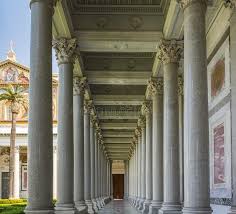
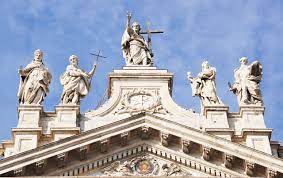
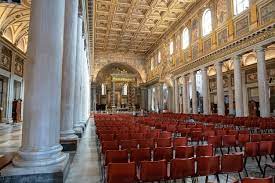
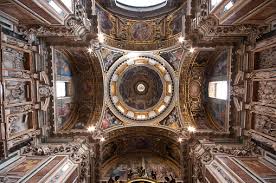
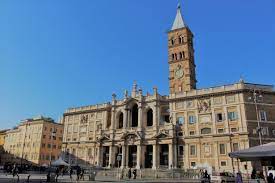

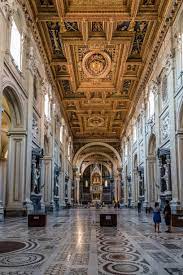



Comments